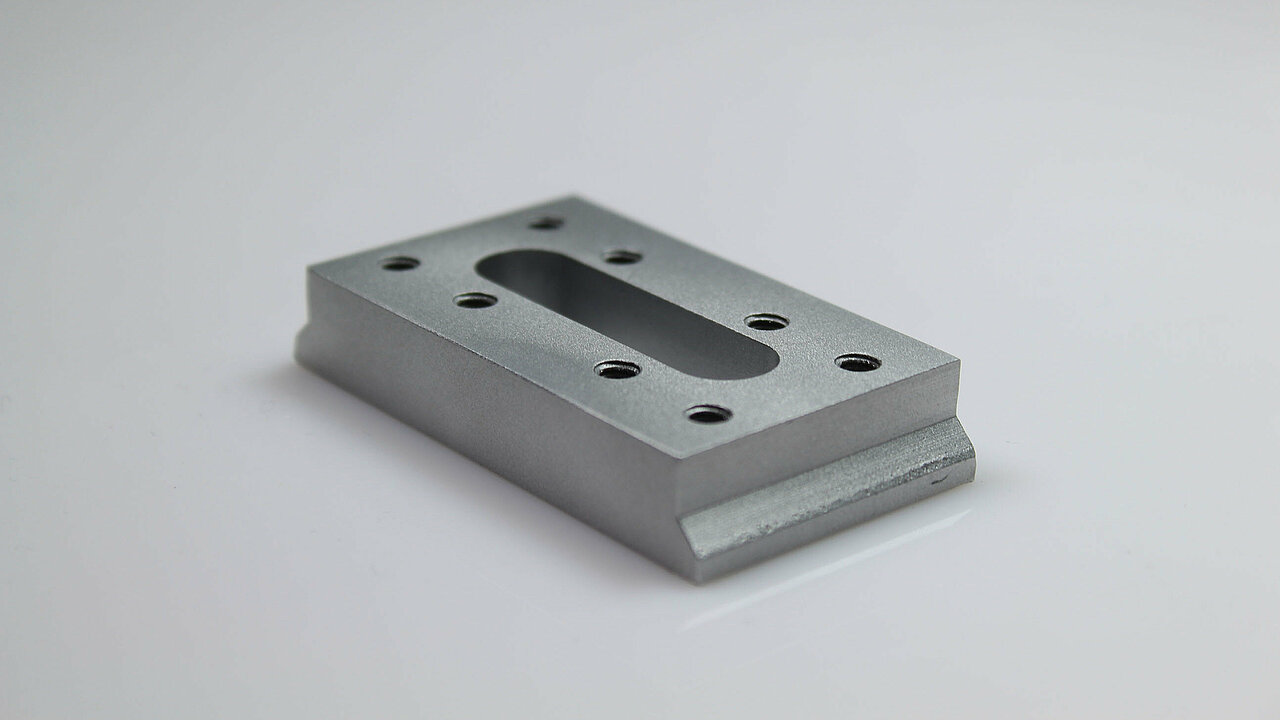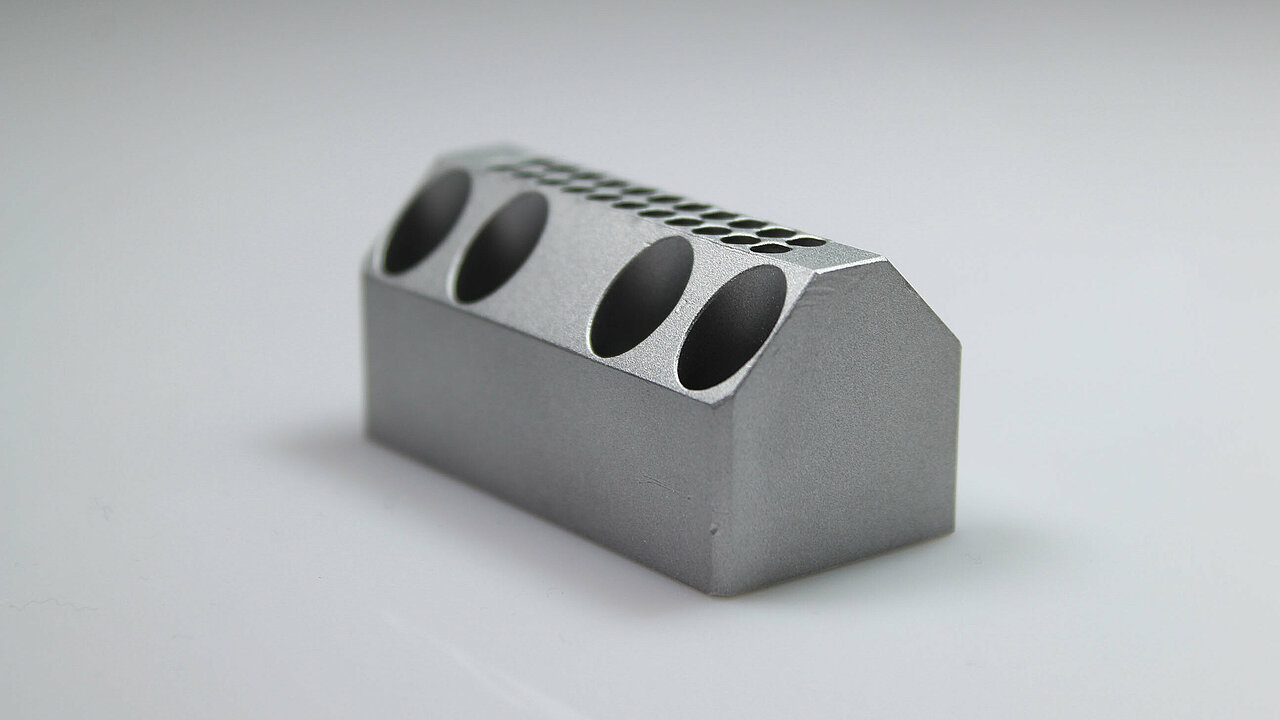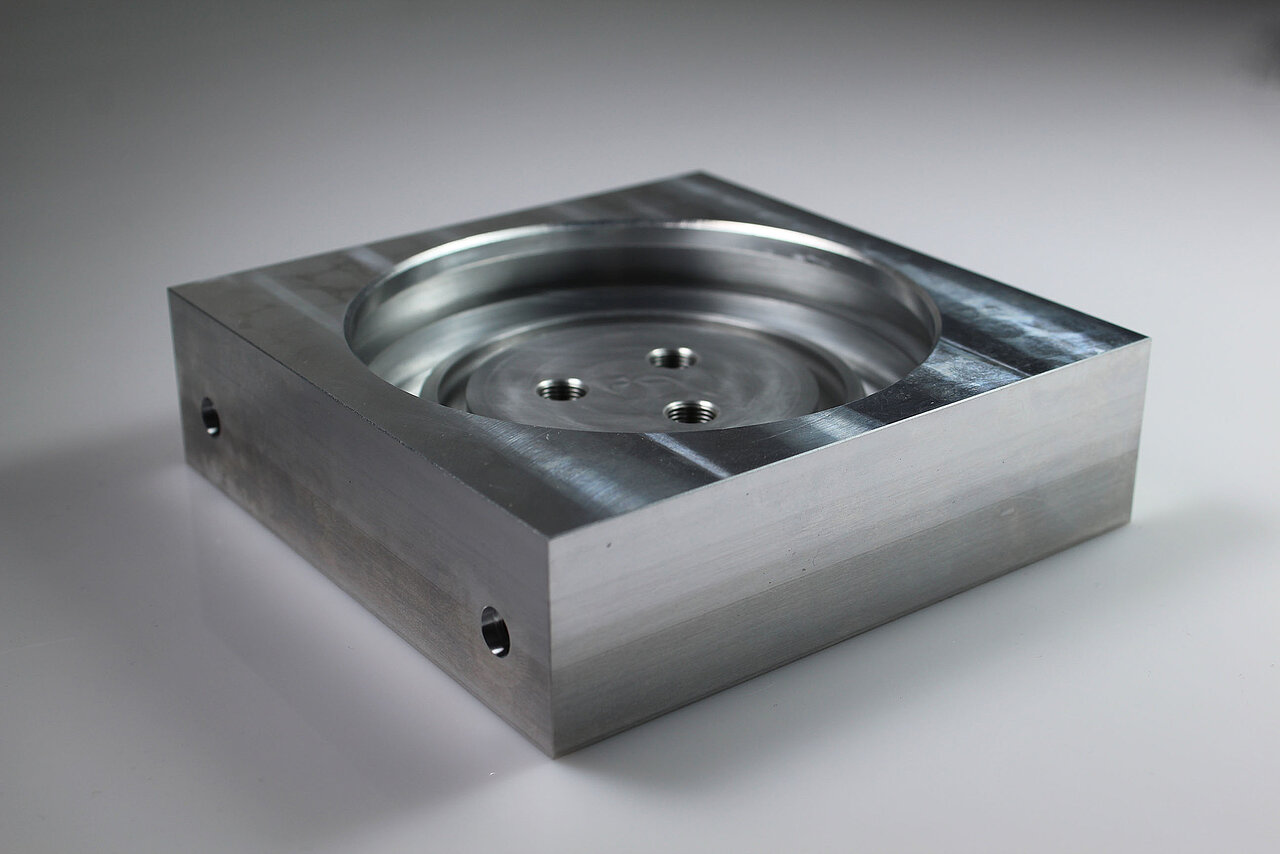Milling machines are often part of the basic equipment of manufacturing companies in order to fulfil the incoming orders for the production of milled parts. Before production can begin, companies face the challenge of choosing the right milling machine. In doing so, it is important to consider important factors such as the design and the differences of the individual milling machines that the market has to offer companies. It is also important to weigh up how the maintainability of the NC or CNC machines can be realised and which measures for the safety of the employees must be implemented.
A milling machine is a cutting machine tool, whereby the cutting tool,
the cutter, moves in rotation. With the process "milling", the milling machine is a subtractive manufacturing process, i.e. material is removed from the workpiece. The milling tool forms the moving element here and the workpiece is fixed. Three or more axes of movement are possible on a milling machine and machining can take place with almost all materials (wood, plastic, metal). In addition, a precision of up to 0.001mm and
a roughness of up to RZ1.6 can be achieved. The cost of a CNC machine usually varies between €5,000 and €150,000 and can be higher in some cases.
Large main groups in the differentiation are the face milling machines and the circumferential milling machines. In the case of face milling machines, the tool axis is perpendicular to the surface of the workpiece, whereas in the case of circumferential milling machines, the tool axis is parallel to the surface of the workpiece. Furthermore, a distinction can be made between the design and purpose of the milling machine, the position of the milling spindle or the control system. For the control of a milling machine, a distinction is made between mechanically or numerically controlled machines and for the position of the milling spindle,
a distinction is made between horizontal and vertical milling machines.
In terms of design and purpose, a distinction can be made between console milling machines, bed-type milling machines or special milling machines. In a console milling machine, there is a movable machine table that is attached to the stand or bed. This type of milling machine is more useful for smaller workpieces. The bed-type milling machine is more suitable for heavy workpieces, as the bed or table is fully supported, which is why tilting moments are prevented. Other types of milling machines would be for example the portal milling machine,
the copy milling machine, table milling machine and many more.
The most important distinction for most manufacturing companies, however, is that between NC machines and CNC machine.
An NC milling machine is controlled by a set of commands expressed in the form of numbers, letters and/or symbols. An NC milling machine is hardware-based and the operation must be carried out by a qualified employee. The machining of the components takes place only on the XY axis and in a straight line. On the NC milling machine, no storage of data within the machine is possible and (short-term) programme changes are difficult to implement. In addition, continuous operation of the machine is tedious here or not possible at all.
A CNC milling machine is controlled by movements of the workpiece or the tool, which is carried out with the help of a prepared programme.
In contrast to the NC milling machine, the CNC milling machine is software-based and the operation is to be carried out by an employee with basic knowledge. Here, component machining can be carried out on the XYZ axis. On the CNC milling machine, data can be stored in the PC so that repetition is possible. It is also possible to change the programme during all-day commissioning. Furthermore, an NC machine is more time-consuming than a CNC machine. The accuracy of an NC machine is also lower than that of a CNC machine; a CNC machine has an accuracy of up to 0.001 mm. On the other hand, the purchase costs of an NC machine are lower than those of a CNC machine.
The structure of a milling machine consists of four components.
The frame, the machine table, the milling head and the feed.
The frame and the machine stand are usually built according to the monobloc design. In this construction, the frame and the and
the machine stand are firmly connected to each other.
The advantage of this is that a high dynamic load capacity is possible and only a small footprint is required. The monobloc design is advantageous for smaller components. Thus, the use of this construction method is limited to a certain size of components. If the frame is made of cast components, it is possible to use a higher weight of components and the stability is improved. For large installations, the frame is assembled on site from welded components.
The use of the machine table or the bed depends on the size and weight of the components to be machined. The bed, for example, is more stable and makes more sense for large workpieces. All feed movements can be realised here. The table, on the other hand, is rather unsuitable for high loads, as deformation of the table and thus of the component can occur. In contrast to the bed, only two or three feed movements can be realised. With two feed movements the table is then called an angular table and with three feed movements it is called a cross table. The milling head has a hydraulic tool clamping system and can be firmly mounted on the column or sit on a guide. On modern milling machines, the milling head can have 5 or more axes. To realise the feed, the rails can guide the table or the spindle. In general, a sliding guide, a linear guide and, on modern milling machines, a rotary guide are usually used.
With milling machines, for example, flying chips, workpieces or sometimes tools can lead to serious injuries. Unprotected moving machine parts are also a potential hazard, as they can pull in clothing.
In order to protect oneself from such dangers, protective measures can be taken in advance. Wearing safety goggles, for example, is very important to shield the eyes from flying chips. Similarly, catch plates can be fitted to catch these chips. Finally, the installation of protective grids in front of moving machine parts and the "emergency stop switch" is another sensible measure to protect employees from risks when handling milling machines.
In contract manufacturing, many manufacturing companies nowadays have a milling machine to realise the production of milled parts.
On the market, companies are therefore offered a wide range of milling machines from which they can choose. The individual machines have their advantages and disadvantages that need to be weighed up.
On the basis of fundamental information such as the different types and the design of a milling machine, a good overview has been provided.
If the purchase of a milling machine is being considered, the company's own order situation should be taken into account. Thus, CNC contract manufacturers should choose a CNC machine, because it meets the company's own requirements. Otherwise, economical production may not be possible and the investment may not be profitable.
Equally important is the issue of safety measures when handling a milling machine. Certain regulations should be adhered to in order to protect employees from injury.
Try our service!
Convince yourself of our uncomplicated service and make a production inquiry.
You will be surprised how little effort is required.
You can look forward to a high-quality prototype or a corresponding small series on the desired delivery date, which fully corresponds to your production drawing. Give it a try - it's worth it!


![[Translate to English:] PART FACTORY_Fräsmaschine [Translate to English:] PART FACTORY_Fräsmaschine](/fileadmin/_processed_/6/2/csm_milling-1151358_1280_f27bbcd80b.jpg)
![[Translate to English:] PART FACTORY_Fräsmaschine_Aufbau [Translate to English:] PART FACTORY_Fräsmaschine_Aufbau](/fileadmin/_processed_/c/a/csm_PART_FACTORY_Fraesmaschine_b31f19bec3.png)
![[Translate to English:] PART FACTORY_Frässpindel [Translate to English:] PART FACTORY_Frässpindel](/fileadmin/_processed_/b/6/csm_PART_FACTORY_Fraesspindel_c99ebec60a.jpg)
![[Translate to English:] PART FACTORY_Sicherheit [Translate to English:] PART FACTORY_Sicherheit](/fileadmin/_processed_/b/a/csm_PART_FACTORY_Sicherheit_gruen_45a9fd423e.png)
![[Translate to English:] PART FACTORY_Fräsen [Translate to English:] PART FACTORY_Fräsen](/fileadmin/_processed_/e/9/csm_Fotolia_84086353_XS_groesser_4b6a04586d.jpg)







![[Translate to English:] PART FACTORY - Kontaktaufnahme [Translate to English:] PART FACTORY - Kontaktaufnahme](/fileadmin/_processed_/2/4/csm_woman-2773007__340_590260e0fe.jpg)